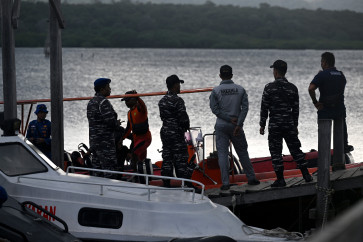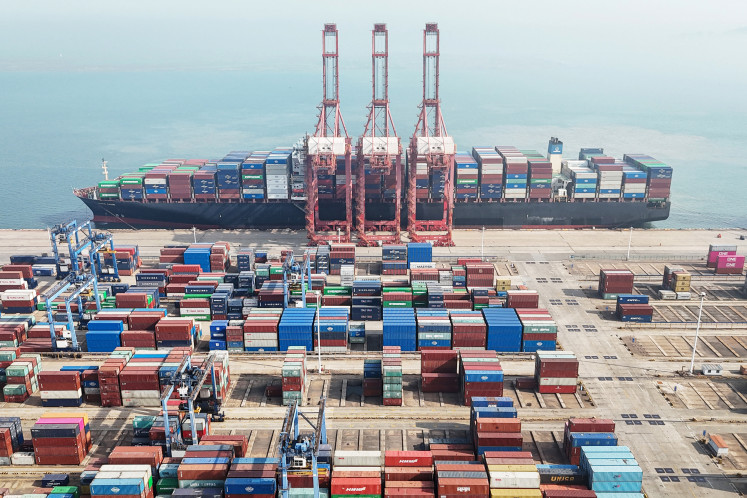Popular Reads
Top Results
Can't find what you're looking for?
View all search resultsPopular Reads
Top Results
Can't find what you're looking for?
View all search resultsProtecting forests and peatlands of Central Kalimantan
The health of Borneo’s forests and its various ecosystems are prerequisites to creating a productive environment for agriculture and plantations.
Change text size
Gift Premium Articles
to Anyone
I
n recent years, Central Kalimantan on the island of Borneo has been subject to a variety of natural disasters stemming from global climate change.
In 2019, rampant wildfires devoured no fewer than 317,749 hectares of land, including vast swathes of biodiverse tropical rainforest. Then, just two years later, it was the turn of major floods to hit almost all districts in the province.
What can we learn from these successive bursts of fire and water?
Central Kalimantan is the province with the highest-value natural landscape in Kalimantan. Natural land cover accounts for 60 percent of the province’s total area and is host to a wide variety of forest ecosystems. However, over time these high-value natural landscapes are being depleted.
A study by the Palangka Raya Institute for Land Use and Agricultural Research (PILAR) in 2017 found that forest cover in Central Kalimantan had decreased by 4 million hectares (or 32 percent) since 1973, a rate of almost 100,000 hectares per year. This drastic change in forest cover is the result of a surge in extractive industries, plantation agriculture and human settlements, beginning in the early 1970s.
Central Kalimantan also boasts 3 million hectares of tropical peatlands; 52 percent of the total across the island of Borneo and 8 percent globally. These peatlands contain nearly 70 percent of the province’s forest biomass and a subsurface carbon stock of 9 gigatons. As well as being a significant carbon store, peat forests can also hold up to 13 times their weight in water.
Peat forests play an important role in hydrology, controlling floods and releasing their water reserves during long periods of drought, helping to stabilize the Earth’s climate.
Despite their clear ecological and hydrological functions, including as a global climate regulator, the forests and peatlands of Central Kalimantan are under tremendous pressure exerted by land conversion, illegal logging and fires.
As a result, the carrying capacity of Central Kalimantan’s ecosystems has become increasingly limited. The forests and their innate biodiversity are inching toward extinction, as ecosystems throughout the province become locked in what experts call a “positive feedback cycle”.
In this cycle, the overexploitation of nature and misuse of forests makes them vulnerable and increases carbon emissions, which, in turn, contributes to global warming and climate change. This disrupts entire weather systems and leads to mass flooding and wildfires, further weakening the land and leaving it even more vulnerable to natural and anthropogenic pressures. And so, the cycle continues.
The conversion of primary forests for plantations, farmland, settlements and mining operations poses a major threat to Kalimantan’s wildlife. Any such transfer of land functions must be measured properly, according to calculations based on established science, so that forests can be used sustainably.
What is needed is not a total abdication of Kalimantan’s natural landscapes, but a middle road. For example, educating palm oil farmers will improve the quality of their plantations and prevent further oil palm extensification.
Threats to the forest should be discussed by all concerned parties. Sustainable programs for conservation must be developed with longevity in mind. One way to reduce the adverse effects of deforestation is by reconnecting forests, which requires a fundamental understanding of forest connectivity and minimum viable cover. The health of Borneo’s forests and the various ecosystems therein are prerequisites to creating a productive environment for agriculture and plantations.
One of the greatest issues presented by natural disasters, like those experienced in Central Kalimantan, is that we rarely draw sufficient lessons to prevent them from reoccurring. In the case of the 2021 flood, most authorities blamed high levels of rainfall throughout the year and gave no outward consideration to biotic factors.
Meanwhile, comprehensive research into the relationship between forest coverage, land carrying capacity, the identification of critical areas and flooding is almost nonexistent.
So how do we develop reliable conclusions about the causes of natural disasters? No longer a matter of political argument, it becomes the realm of research and science. Unbiased research is essential for disaster prevention and mitigating future impacts. Policies should be selected according to a robust body of evidence, with human and environmental health at their center.
Living in Kalimantan, something to be grateful for is the region’s indigenous populace, whose customs are governed by a deep and abiding respect for nature. In Central Borneo, this respect for nature is commonly referred to as “local wisdom”. Local wisdom is widely held by indigenous peoples, who live off the land and rely on its natural resources to survive.
For instance, the Dayak Ngaju people call peatland a plot of sahep. However, indigenous groups will also use the name petak seha, or burned land. Dayak farmers avoid peatland, as it burns periodically and is difficult to manage. This local wisdom sends a message: that we must be careful not to overstretch forest resources and work against the natural way of things.
However, as modernity’s long feelers have reached these distant villages, their local wisdom has begun to fade. Economic disruption caused by the transition from small-scale farming to massive logging operations sponsored by multinational corporations in the early 1990s to 2000s represented a turning point for many of these traditional cultures, now threatened by globalization.
Reinforcing the role of indigenous communities in conservation by promoting local wisdom is a key step in the right direction. Nonetheless, local wisdom is a complex system of knowledge and does not always align with scientific understanding.
One of the main differences is that local wisdom is context-bound, so cannot easily be transferred or generalized to fit other sociocultural contexts. Moreover, it is necessary to recognize that local wisdom is not always sustainable or socially just, and we must not blindly idealize these ideas without closely examining their context.
In light of these things, how can we use local wisdom appropriately in the wider context of Central Kalimantan?
To answer that question, we must also ensure that the actions described above are continuously implemented. By using its resources wisely, and through long-term conservation efforts with proper, consistent use of science and technology, we can make space for nature.
In turn, nature will provide us with greater benefits to support ourselves, our children and grandchildren, thus breaking the positive feedback cycle.
***
The writer is a cofounder of The Last Leaf, Borneo Nature and Art Syndication.










